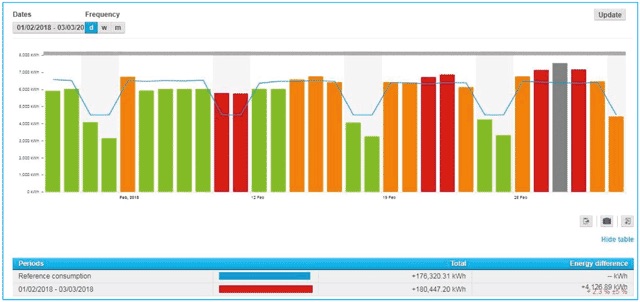
With the government’s commitment to meeting net-zero by 2050, sub-metering will have an increasingly important role to play. Tim Hooper, managing director of Elcomponent, looks at recent progress
Any organisation’s net zero strategy will require good quality consumption data in order to identify and track energy opportunities. Sub-metering systems, which allow energy consumption to be tracked at the level of individual processes in a plant or factory, will play an increasingly important role in providing this information, allowing the organisation to have a current and global view of its carbon position at any time.
The monitoring requirement for net zero is primarily the same as for any energy reduction plan. Metering at a “sensible” level of detail is vital, but the need for a sound business case remains as firm as ever.
A great deal of highly effective energy management can be achieved without additional meters, but there is a great deal more that can only be achieved with a properly designed sub-metering system. The revised 2018 edition of ISO50001 makes it a requirement to monitor all Significant Energy Uses (SEUs – defined as “energy use accounting for significant energy consumption and/or offering considerable potential for energy performance improvement”) and to state how and at what frequency data shall be collected and retained.
Even for relatively small organisations, the march towards successful ISO50001 accreditation is greatly eased and in some cases made possible by the existence of sub-metering, even before the requirement to continually improve energy management is considered. ISO50001 has therefore been an additional driver for the installation of new systems, and the augmentation of existing ones, as key elements in achieving and retaining accreditation. Compliance with ESOS, the mandatory energy assessment scheme for organisations in the UK that meet the qualification criteria, has also been a driver for the implementation of sub-metering systems – the information that they provide hugely simplifies the preparation of both reference data and post-implementation performance, particularly for larger organisations.
However, irrespective of initiatives such as ISO50001 and ESOS, at some point in a long-term energy strategy the measurement of consumption at department or process level and the provision of data at half-hour (or shorter) intervals become essential. Several factors have accelerated that process more recently.
The relative paucity of kWh meters approved under MID, the EU Measuring Instruments Directive, for submetering applications has eased considerably, so prices are lower and data connection options broader. The legal requirements surrounding heat metering have resulted in a rapidly expanding choice of lower cost hardware. In data and networking the pace of development is even faster, with similar cost reductions particularly in the field of 3G/4G communication, all of which has been enthusiastically taken up by Elcomponent and others to deliver better-than-ever value and performance to the market.
But no submetering system is worthy of consideration unless the software package associated it comes up to scratch. There have been a number of key advances on this front. The almost exclusive use of the web as the delivery mechanism for the desktop interface has created a much wider user base, and software providers have responded by creating dashboards and other types of interface designed for a non-expert audience. A more recent change has been the increased emphasis on automated gathering of driver data (such as weather, production output, occupancy, and footfall) and the incorporation of those data into the software’s reporting capability. However, knowing the energy consumed per item produced is only half the story.
The biggest step forward has been to easily calculate and present actual consumption against expected consumption accurately and automatically, and it has been enthusiastically embraced. Often presented as a “traffic light” or red/amber/ green report, these are used as a highly effective daily check on performance in manufacturing plants and commercial buildings alike. If amber is treated as the norm, excursions into red or green territory can be automatically monetised and investigated, allowing exceptionally high efficiency levels to be achieved and maintained.
This example demonstrates how much progress has been made from the standard half-hour bar chart and how integrated a true submetering system actually is.
It requires a unique blend of technology including meters, dataloggers and networking; a broad and easily programmed interface for additional data streams such as production and degree days; and clever software that uses well-proven energy management techniques such as regression behind the scenes.
These ingredients allow the user interface to remain simple and intuitive, while providing accurate forecasting and performance reporting. The near future will see further developments as AI in particular makes its presence felt, but in an uncertain 2021, there is no ambiguity about the role that submetering plays in energy cost control and the role it must play in reaching net zero goals.
Elcomponent are experts in energy monitoring systems, tenant billing, metering and data collection, providing services including surveys, installation, and system operation.

